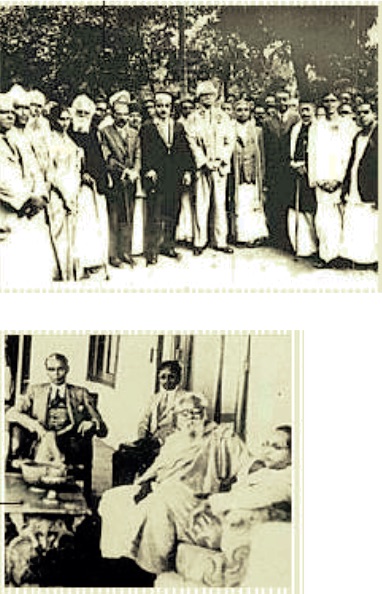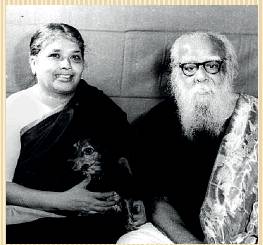Periyar E. V. Ramasamy
This is a collection of articles archived for the excellence of their content. |

From: Periyar continues to influence the political landscape of TN, and there are reasons for it, March 8, 2018: The Times of India

From: Periyar continues to influence the political landscape of TN, and there are reasons for it, March 8, 2018: The Times of India

From: Periyar continues to influence the political landscape of TN, and there are reasons for it, March 8, 2018: The Times of India
A tryst with socialism
A.R. Venkatachalapathy, Sep 18, 2017: The Hindu
A.R. Venkatachalapathy is a historian of the Dravidian movement
On December 13, 1931, Periyar set sail on the French ship, Amboise, from Madras on a voyage that would take him to the Soviet Union and other countries in Europe. As the Criminal Investigation Department observed, “Their visit to Russia was not bona fide, and the lieutenants of [Periyar] have been asked to keep this fact as secret as possible.”
What is referred to in Periyar’s biographies as the European tour took him to the Soviet Union via Sri Lanka, the Suez, Cairo, Athens, and Constantinople. Later, he journeyed through Germany, France, Spain, Portugal, and Sri Lanka.
Periyar maintained a tour diary, parts of which were reproduced in his own lifetime. Many photographs too have survived. In 1997, V. Anaimuthu, editor of Periyar’s collected writings, partially unearthed Periyar’s dairy. Though incomplete, this is the single-most important source of the tour.
The Soviet tour
Heralding his Soviet tour, Periyar published a part translation, in Tamil, of The Communist Manifesto. His co-translator, S. Ramanathan, and his young relative, Ramu, accompanied him on this tour.
In Athens they had to wait for two weeks for Soviet permission. It is not clear how contacts were established with the Soviets, but the pass eventually arrived on February 2, 1932. They boarded the S.S. Tchitcherine, and after a seasick crossing of the Black Sea, arrived at Odessa. They took a train at Kiev and reached Moscow on February 14.
Periyar promptly reported to the VOKS, the All-Union Society for Cultural Relations with Foreign Countries. No record of what transpired in the first two months of the tour has survived, and we are able to piece together their programme only from fragmentary information.
Soon after his arrival, Periyar made the mandatory visit to the Lenin Mausoleum in Red Square. He visited the Baku oilfields in Azerbaijan, Sukhumi in Abkhazia, and Tbilisi in Georgia. Apart from Leningrad, Periyar also visited Dneprostroi and Zaporizhia — the hydroelectric stations that were symbols of Soviet power.
From April 19, when he returned to Moscow, we have Periyar’s day-to-day record of his subsequent 30 days in the Soviet Union. Here he was hosted by what Periyar refers to as the atheist society, the League of the Militant Godless. Some literature was shared between Periyar and the League, including a letter from the German International Freethinkers’ Association and a bulletin of the Association.
Periyar and his associates received excellent treatment wherever they went, which they contrasted with the privations of the Great Depression in other parts of the Western world. One of the detailed descriptions that Periyar provides of Soviet administration is that of the Moskva Sarkozy Sakiz District People’s Court.
He also visited the Lefortovo prison, the notorious Soviet prison associated with the KGB and the Stalinist purges. Periyar went to the AMO (Avtomobilnoe Moskovskoe Obshchestvo, or Moscow Automotive Enterprise). The kitchen and the massive dining area at the AMO factory impressed him. He was also taken to the Profintern (Red International of Labour Unions) office. This was probably more serious business, as the passage of worker radicals to Moscow was discussed.
It was a coincidence that Periyar was in Moscow on May Day, and he was witness to the joyous celebrations. Dioramas depicting various scenes such as those of the haves and have-nots, which reminded Periyar of the Mariamman temple festivals, were being paraded. Army units marched past the Lenin Mausoleum where Stalin, Mikhail Kalinin, Yemelyan Yaroslavsky and other important leaders stood, waving to the crowds. The Turkish Prime Minister, Ismet Inonu, was a state guest on the occasion. Some days later, a welcome reception for all foreign delegates who had come for May Day was organised by the Society of Old Bolsheviks at the Great Kremlin Palace, and Periyar too was invited.
Émigrés of various hues were present in Moscow at that time and Periyar met some of them, including Abani Mukherji, a founding member of the Communist Party of India.
By the end of April 1932, for reasons not entirely clear, there was discussion about concluding the trip. This is not surprising, as there is confusing information on what Periyar and his two associates were doing or attempting to do in Moscow. Even though Periyar was in touch with Communist Party of the Soviet Union officials, the logistics of the tour were being managed by the League of the Militant Godless.
By May 14, Periyar’s departure for Berlin was confirmed. After some delay, the papers finally arrived on May 17, and Periyar departed from Moscow immediately.
Reactions on the red spectre
What was the import of Periyar’s Soviet tour, and what impact did it have on his political career?
The short statement that Periyar released immediately on return was ominous. It exhorted members of his self-respect movement to desist from using traditional honorifics such as Maha-ganam, Sri, Thiru, and Thirumathi, as prefixes and urged them instead to employ ‘Thozhar’, or ‘Comrade’. It is a custom in Tamil Nadu to ask older and venerated people to name children. Such was his fascination for the Soviet Union that Periyar named the daughter of a leading Dravidian intellectual ‘Russia’ and another child ‘Moscow’.
According to a secret police report, Periyar “lost no time in starting the spread of Communist doctrine”. Within three months of his return he had addressed over 40 public meetings where he “expressed unbound admiration of the Russian regime” and stated “his intention to end the present administration and establish a Socialist form of government.”
Considering that the government was paranoid about the red spectre, reaction was swift. Police action was taken against him and his family. Periyar was soon forced to take a call on the party’s programme and its immediate future. In March 1935, in a public statement, he declared that he was withdrawing his socialist programme in the larger interest of his self-respect movement.
Periyar remained impressed by the achievements of the Soviet Union all through his life. The complete control of society and economy by the state made a deep impact on him. “It is a new world,” he observed. “Such a transformation has never ever taken place in any country.” He believed that only a Soviet-style state could rid India of its poverty. But Periyar either did not follow what happened in the Soviet Union subsequently or did not care for the reality of lived Soviet socialism. He preferred to believe in an idealised version of a socialist society, for he did not comment about the Moscow show trials, the Stalinist purges, etc. His engagement with socialism, intense during 1932-35, never really surfaced in the next 40 years of an eventful political life. The socialist fringe of his movement left him and joined the still, and forever, nascent Communist Party.
However, Periyar made frequent comments about his Soviet tour and favourable statements about the Soviet Union all through his life, while remaining critical of the Indian communist party on the grounds that it was a Brahminical party. How modern Tamil Nadu would have shaped if the brief alliance between Periyar’s movement and socialism had continued remains a most interesting ‘what if’ question.
Life & times
1919 Joins Indian National Congress
1879 E V Ramasamy (Periyar) born to a wealthy family in Madras Presidency 1924-25 Role in Vaikom Satyagraha contributes to the triumph a social struggle that paves the way for other egalitarian social measures 1925 Resigns from Congress as he felt it only served the purpose of the upper caste
Starts the self-respect movement aimed at removing social injustice and inequality
Marriages were performed without priests and religious rites
Propagates need for birth control
Rallies for support to abolish Devadasi system, child marriage 1929-1932 Tours British Malaya, Europe and Russia
1939 Becomes head of the Justice Party, one of the main alternatives to the Indian National Congress 1944 Justice Party more or less became Dravidar Kazhagam
Periyar opposed introduction of Hindi as a compulsory language in schools and gave the slogan “Tamil Nadu for Tamilians”
Contribution to Tamil Nadu politics changed the face of political movement in south India with regional parties gaining a stronghold over national parties